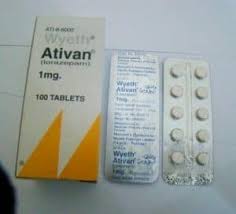Ativan (Lorazepam)
Price range: $90.00 through $560.00
Anxiety is one of the most common mental illnesses out there. Nearly everyone suffers from it at least once.
Description
🔹 What is Ativan (Lorazepam)?
Ativan is the brand name for lorazepam, a benzodiazepine medication primarily used to treat anxiety disorders. It enhances the activity of a neurotransmitter in the brain called gamma-aminobutyric acid (GABA), which has calming effects on the nervous system.
🔹 Uses of Ativan / Lorazepam
-
Anxiety Disorders – Short-term relief of severe anxiety symptoms.
-
Insomnia – Helps with sleep when anxiety is a contributing factor.
-
Preoperative Sedation – Reduces anxiety before surgery or procedures.
-
Seizures (Status Epilepticus) – Used intravenously in emergency settings.
-
Alcohol Withdrawal – Helps manage agitation, tremors, and risk of seizures.
-
Nausea/Vomiting from Chemotherapy – Sometimes used with anti-nausea medications.
🔹 How It Works
Lorazepam binds to GABA-A receptors in the brain, increasing GABA’s calming effect. This slows down nerve activity, reducing:
-
Anxiety
-
Seizures
-
Muscle spasms
-
Insomnia
🔹 Common Dosage Forms
-
Tablets: 0.5 mg, 1 mg, 2 mg
-
Injectable Solution: For hospital use
-
Oral Concentrate: A liquid form for patients who can’t swallow pills
🔹 Typical Dosages
(Doses vary depending on condition, age, and health)
-
Anxiety: 1–4 mg/day in divided doses
-
Insomnia (due to anxiety): 2–4 mg at bedtime
-
Preoperative sedation: 0.05 mg/kg IM, 1–2 hours before procedure
🔹 Side Effects
Common:
-
Drowsiness
-
Dizziness
-
Weakness
-
Confusion
-
Unsteadiness
Serious (seek medical help):
-
Respiratory depression
-
Severe sedation
-
Memory problems (especially in older adults)
-
Paradoxical reactions (e.g., aggression, agitation)
🔹 Precautions and Warnings
-
Addiction risk: Can be habit-forming if used long-term
-
Withdrawal symptoms: Can include seizures, tremors, anxiety, and insomnia if stopped abruptly
-
Avoid alcohol: Increases sedative effects and risk of respiratory depression
-
Not recommended for long-term use due to dependency risk
-
Caution in elderly: Higher risk of falls and confusion
🔹 Contraindications
-
Known hypersensitivity to lorazepam or other benzodiazepines
-
Acute narrow-angle glaucoma
-
Severe respiratory insufficiency (unless being used to manage seizures)
🔹 Interactions
May interact with:
-
Other CNS depressants (e.g., opioids, alcohol, sleep aids)
-
Antidepressants
-
Anticonvulsants
-
Some antifungals (e.g., ketoconazole)
-
Clozapine (increased risk of sedation and confusion)
🔹 Pregnancy and Breastfeeding
-
Pregnancy: Category D (positive evidence of risk); may cause fetal harm or withdrawal in newborn
-
Breastfeeding: Can pass into breast milk; not recommended unless benefits outweigh risks
🔹 Summary
| Feature | Detail |
|---|---|
| Purpose | Anti-anxiety, sedative, anticonvulsant |
| Class | Benzodiazepine |
| Onset | 30–60 minutes (oral) |
| Duration | 6–8 hours |
| Half-life | ~12 hours |
| Addiction risk | Moderate to high (with misuse) |
Let me know if you want a comparison with other benzodiazepines (like Xanax or Valium), patient counseling tips, or a printable summary.
Additional information
| Dosage | |
|---|---|
| Quantity | 120 Pills, 180 Pills, 30 Pills, 60 Pills, 90 Pills |
Only logged in customers who have purchased this product may leave a review.













Reviews
There are no reviews yet.